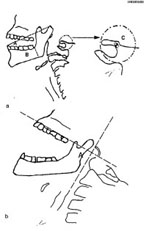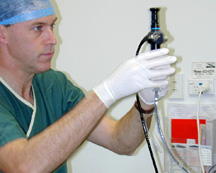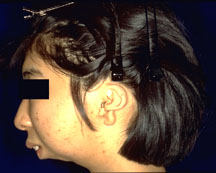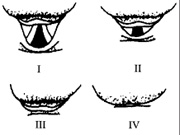|
.
We can often predict a difficult intubation by assessing your mouth opening, neck movement, and some other measurements.
This person would probably not be an easy intubation Grade 3 or 4 ? But someone who appears quite normal anatomically, can still be an unexpected difficult intubation. Any well trained anesthesiologist will be able to deal with the situation, so you should not worry about it! But if you are informed afterwards that you were a "difficult intubation", this site may help explain what it means. If you are a known difficult intubation, your anesthetist may recommend awake intubation with a flexible fiberoptic intubating bronchoscope, as the safest way of getting the tube in the right orifice. If it goes into the esophagus by mistake then no air or oxygen will get into your bloodstream, with serious consequences within a few minutes - brain damage, or death will result if this is undetected. |
||
   |
||
| Above shows some skull and jaw angles taken from Xrays, and the four grades of laryngeal view - 1 = good, 4 = none, fortunately a rare occurrence. Most difficult intubations would be grade 3, epiglottis only visible. | ||
| page 4 contact us join mailing list |

